1. Manceau G, Karoui M, Werner A, Mortensen NJ, Hannoun L. Comparative outcomes of rectal cancer surgery between elderly and non-elderly patients: a systematic review. Lancet Oncol. 2012; 13:e525–e536. PMID:
23182193.
2. Mrak K, Eberl T, Laske A, Jagoditsch M, Fritz J, Tschmelitsch J. Impact of postoperative complications on long-term survival after resection for rectal cancer. Dis Colon Rectum. 2013; 56:20–28. PMID:
23222276.
3. Kim S, Kang SI, Kim SH, Kim JH. The effect of anastomotic leakage on the incidence and severity of low anterior resection syndrome in patients undergoing proctectomy: a propensity score matching analysis. Ann Coloproctol. 2021; 37:281–290. PMID:
34098631.
4. Erlandsson J, Pettersson D, Glimelius B, Holm T, Martling A. Postoperative complications in relation to overall treatment time in patients with rectal cancer receiving neoadjuvant radiotherapy. Br J Surg. 2019; 106:1248–1256. PMID:
31197822.
5. Guren MG, Wiig JN, Dueland S, Tveit KM, Fosså SD, Waehre H, et al. Quality of life in patients with urinary diversion after operation for locally advanced rectal cancer. Eur J Surg Oncol. 2001; 27:645–651. PMID:
11669593.
6. Näsvall P, Dahlstrand U, Löwenmark T, Rutegård J, Gunnarsson U, Strigård K. Quality of life in patients with a permanent stoma after rectal cancer surgery. Qual Life Res. 2017; 26:55–64. PMID:
27444778.
7. Park IJ, Yu CS. Current issues in locally advanced colorectal cancer treated by preoperative chemoradiotherapy. World J Gastroenterol. 2014; 20:2023–2029. PMID:
24587677.
8. Varela C, Kim NK. Surgical treatment of low-lying rectal cancer: updates. Ann Coloproctol. 2021; 37:395–424. PMID:
34961303.
9. Huh JW, Maeda K, Liu Z, Wang X, Roslani AC, Lee WY. Current status of “watch-and-wait” rectal cancer treatment in Asia-Pacific countries. Ann Coloproctol. 2020; 36:70–77. PMID:
32054250.
10. Park IJ, Lee JL, Yoon YS, Kim CW, Lim SB, Yu CS, et al. Oncologic outcomes of organ preserving approaches in patients with rectal cancer treated with preoperative chemoradiotherapy. Ann Coloproctol. 2019; 35:65–71. PMID:
31113171.
11. Oh SG, Park IJ, Seo JH, Kim YI, Lim SB, Kim CW, et al. Beware of early relapse in rectal cancer patients treated with preoperative chemoradiotherapy. Ann Coloproctol. 2020; 36:382–389. PMID:
32674549.
12. Kasi A, Abbasi S, Handa S, Al-Rajabi R, Saeed A, Baranda J, et al. Total neoadjuvant therapy vs standard therapy in locally advanced rectal cancer: a systematic review and meta-analysis. JAMA Netw Open. 2020; 3:e2030097. PMID:
33326026.
13. Petrelli F, Trevisan F, Cabiddu M, Sgroi G, Bruschieri L, Rausa E, et al. Total neoadjuvant therapy in rectal cancer: a systematic review and meta-analysis of treatment outcomes. Ann Surg. 2020; 271:440–448. PMID:
31318794.
14. Renehan AG, Malcomson L, Emsley R, Gollins S, Maw A, Myint AS, et al. Watch-and-wait approach versus surgical resection after chemoradiotherapy for patients with rectal cancer (the OnCoRe project): a propensity-score matched cohort analysis. Lancet Oncol. 2016; 17:174–183. PMID:
26705854.
15. Dossa F, Chesney TR, Acuna SA, Baxter NN. A watch-and-wait approach for locally advanced rectal cancer after a clinical complete response following neoadjuvant chemoradiation: a systematic review and meta-analysis. Lancet Gastroenterol Hepatol. 2017; 2:501–513. PMID:
28479372.
16. Park SH, Cho SH, Choi SH, Jang JK, Kim MJ, Kim SH, et al. MRI assessment of complete response to preoperative chemoradiation therapy for rectal cancer: 2020 guide for practice from the Korean Society of Abdominal Radiology. Korean J Radiol. 2020; 21:812–828. PMID:
32524782.
17. Gambacorta MA, Masciocchi C, Chiloiro G, Meldolesi E, Macchia G, van Soest J, et al. Timing to achieve the highest rate of pCR after preoperative radiochemotherapy in rectal cancer: a pooled analysis of 3085 patients from 7 randomized trials. Radiother Oncol. 2021; 154:154–160. PMID:
32966845.
18. Kong JC, Guerra GR, Warrier SK, Ramsay RG, Heriot AG. Outcome and salvage surgery following “watch and wait” for rectal cancer after neoadjuvant therapy: a systematic review. Dis Colon Rectum. 2017; 60:335–345. PMID:
28177997.
19. Habr-Gama A, Perez RO, Nadalin W, Sabbaga J, Ribeiro U Jr, Silva e Sousa AH Jr, et al. Operative versus nonoperative treatment for stage 0 distal rectal cancer following chemoradiation therapy: long-term results. Ann Surg. 2004; 240:711–718. PMID:
15383798.
20. Perez RO, Habr-Gama A, São Julião GP, Proscurshim I, Fernandez LM, de Azevedo RU, et al. Transanal endoscopic microsurgery (TEM) following neoadjuvant chemoradiation for rectal cancer: outcomes of salvage resection for local recurrence. Ann Surg Oncol. 2016; 23:1143–1148. PMID:
26577119.
21. Martens MH, Maas M, Heijnen LA, Lambregts DM, Leijtens JW, Stassen LP, et al. Long-term outcome of an organ preservation program after neoadjuvant treatment for rectal cancer. J Natl Cancer Inst. 2016; 108:djw171. PMID:
27509881.
22. Perez RO, Habr-Gama A, São Julião GP, Proscurshim I, Scanavini Neto A, Gama-Rodrigues J. Transanal endoscopic microsurgery for residual rectal cancer after neoadjuvant chemoradiation therapy is associated with significant immediate pain and hospital readmission rates. Dis Colon Rectum. 2011; 54:545–551. PMID:
21471754.
23. Hiotis SP, Weber SM, Cohen AM, Minsky BD, Paty PB, Guillem JG, et al. Assessing the predictive value of clinical complete response to neoadjuvant therapy for rectal cancer: an analysis of 488 patients. J Am Coll Surg. 2002; 194:131–136. PMID:
11848629.
24. Marijnen CA. Organ preservation in rectal cancer: have all questions been answered? Lancet Oncol. 2015; 16:e13–e22. PMID:
25638548.
25. Garcia-Aguilar J, Patil S, Gollub MJ, Kim JK, Yuval JB, Thompson HM, et al. Organ preservation in patients with rectal adenocarcinoma treated with total neoadjuvant therapy. J Clin Oncol. 2022; 40:2546–2556. PMID:
35483010.
26. Franke AJ, Parekh H, Starr JS, Tan SA, Iqbal A, George TJ Jr. Total neoadjuvant therapy: a shifting paradigm in locally advanced rectal cancer management. Clin Colorectal Cancer. 2018; 17:1–12. PMID:
28803718.
27. Fernandez LM, Figueiredo NL, Habr-Gama A, São Julião GP, Vieira P, Vailati BB, et al. Salvage surgery with organ preservation for patients with local regrowth after watch and wait: is it still possible? Dis Colon Rectum. 2020; 63:1053–1062. PMID:
32692070.
28. Fernandez LM, São Julião GP, Vailati BB, Habr-Gama A, Perez RO. Nonoperative management for T2 low rectal cancer: a Western approach. Clin Colon Rectal Surg. 2020; 33:366–371. PMID:
33162841.
29. Patel UB, Blomqvist LK, Taylor F, George C, Guthrie A, Bees N, et al. MRI after treatment of locally advanced rectal cancer: how to report tumor response: the MERCURY experience. AJR Am J Roentgenol. 2012; 199:W486–W495. PMID:
22997398.
30. Habr-Gama A, Perez RO, Wynn G, Marks J, Kessler H, Gama-Rodrigues J. Complete clinical response after neoadjuvant chemoradiation therapy for distal rectal cancer: characterization of clinical and endoscopic findings for standardization. Dis Colon Rectum. 2010; 53:1692–1698. PMID:
21178866.
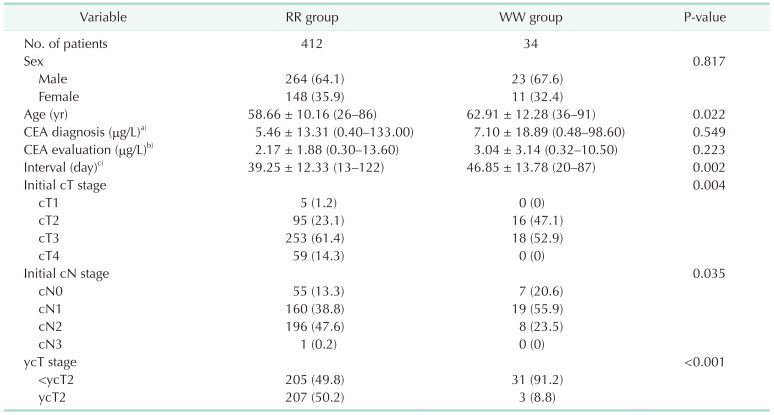
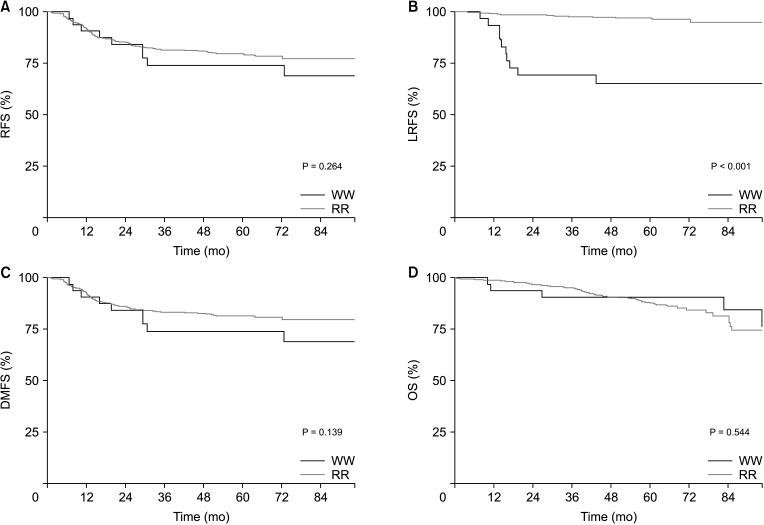
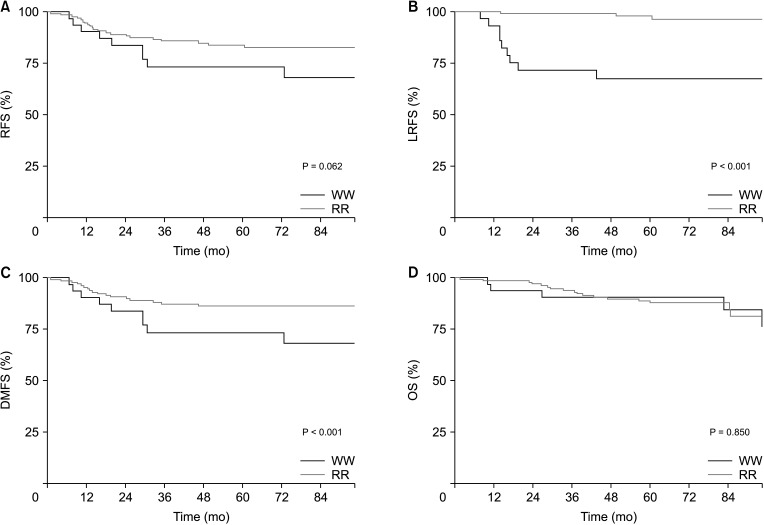




 PDF
PDF Citation
Citation Print
Print



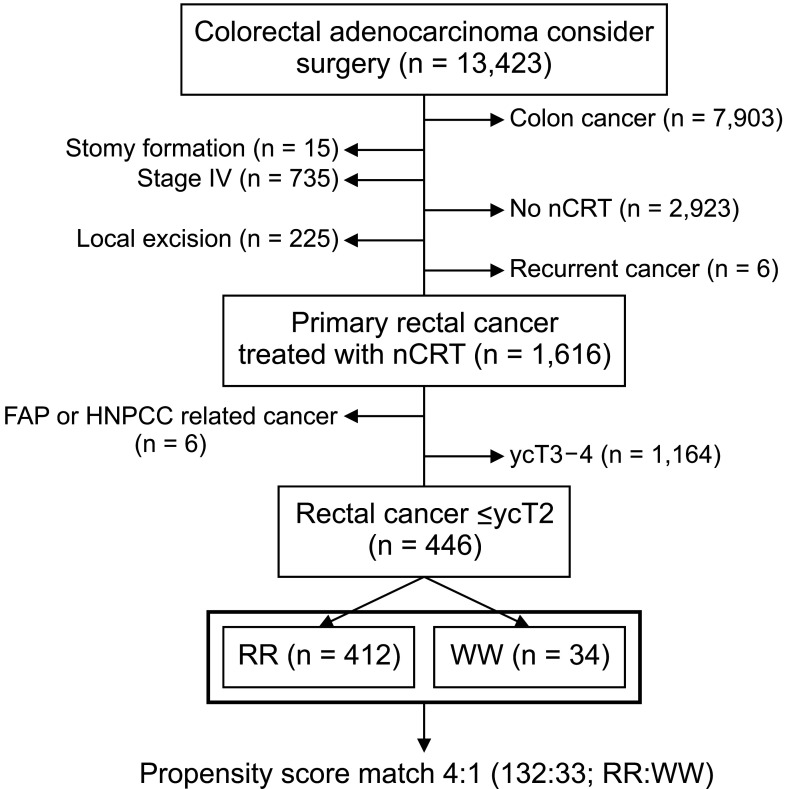

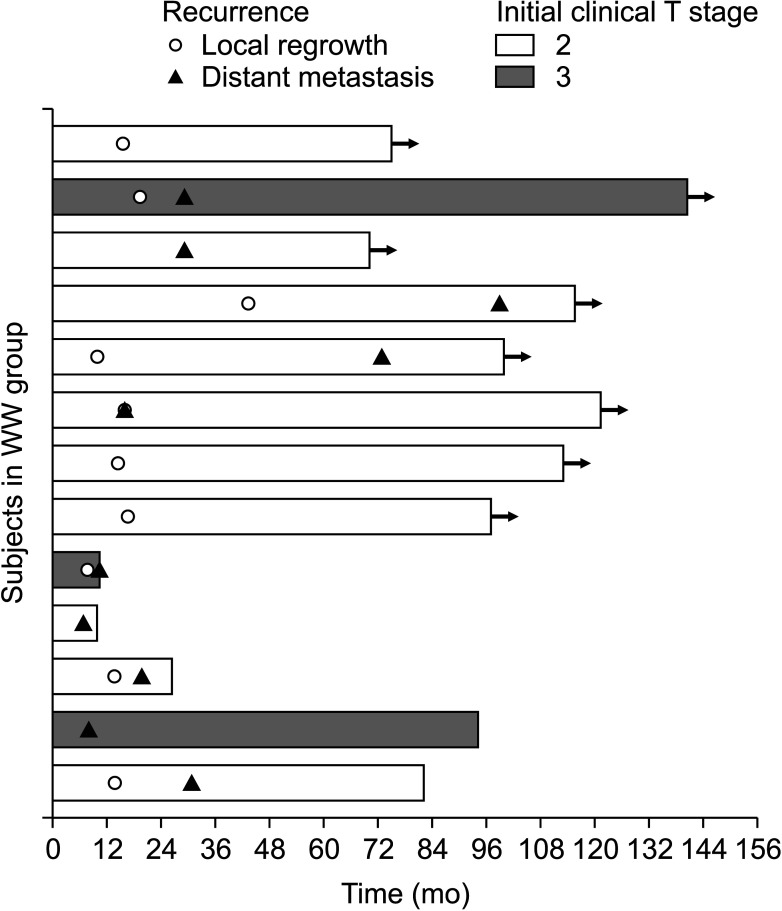

 XML Download
XML Download